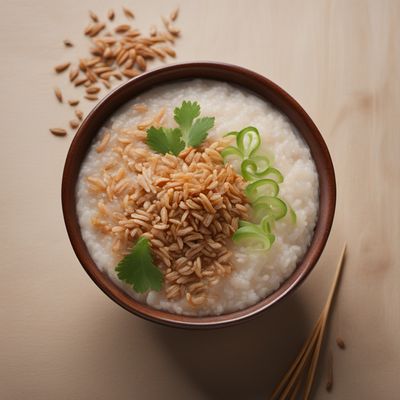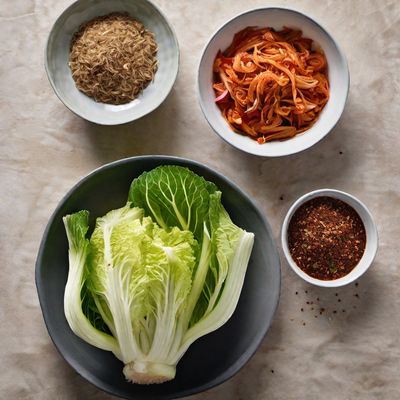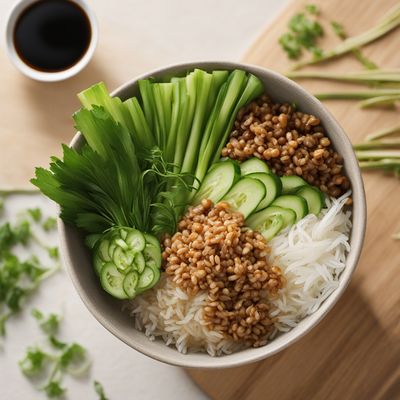
Recipe
Vegetarian Kimchi
Vibrant Veggie Kimchi: A Twist on the Classic Korean Dish
4.8 out of 5
In the realm of vegetarian cuisine, this adaptation of the traditional Korean dish, kimchi, brings a burst of flavor and a healthy dose of probiotics. Packed with fermented vegetables and a tangy kick, this vegetarian kimchi is a delightful addition to any plant-based meal.
Metadata
Preparation time
20 minutes
Cooking time
0 minutes (fermentation time: 1-2 days)
Total time
1-2 days (including fermentation and refrigeration)
Yields
4 servings
Preparation difficulty
Easy
Suitable for
Vegetarian, Vegan, Gluten-free, Dairy-free, Low calorie
Allergens
Soy
Not suitable for
Paleo, Keto, Low-carb, High-protein, Nut-free
Ingredients
This vegetarian kimchi recipe replaces the traditional fish sauce and shrimp paste with umami-rich ingredients like soy sauce and miso paste. The absence of animal products makes it suitable for those following a vegetarian diet. We alse have the original recipe for Kimchi, so you can check it out.
-
1 medium Napa cabbage (about 2 pounds / 900g) 1 medium Napa cabbage (about 2 pounds / 900g)
-
1/4 cup (60ml) sea salt 1/4 cup (60ml) sea salt
-
4 cups (950ml) water 4 cups (950ml) water
-
1 tablespoon (15ml) soy sauce 1 tablespoon (15ml) soy sauce
-
1 tablespoon (15g) miso paste 1 tablespoon (15g) miso paste
-
1 tablespoon (15g) grated ginger 1 tablespoon (15g) grated ginger
-
3 cloves garlic, minced 3 cloves garlic, minced
-
2 tablespoons (30ml) rice vinegar 2 tablespoons (30ml) rice vinegar
-
2 tablespoons (30ml) sesame oil 2 tablespoons (30ml) sesame oil
-
2 tablespoons (30ml) gochugaru (Korean red pepper flakes) 2 tablespoons (30ml) gochugaru (Korean red pepper flakes)
-
2 green onions, thinly sliced 2 green onions, thinly sliced
-
1 medium carrot, julienned 1 medium carrot, julienned
Nutrition
- Calories (kcal / KJ): 70 kcal / 293 KJ
- Fat (total, saturated): 4g, 0.5g
- Carbohydrates (total, sugars): 8g, 3g
- Protein: 2g
- Fiber: 3g
- Salt: 2g
Preparation
-
1.Cut the Napa cabbage into quarters lengthwise and remove the core. Chop the cabbage into bite-sized pieces.
-
2.Dissolve the sea salt in water in a large bowl. Add the cabbage and let it sit for 2 hours, turning occasionally.
-
3.Rinse the cabbage thoroughly under cold water and drain well.
-
4.In a separate bowl, combine the soy sauce, miso paste, grated ginger, minced garlic, rice vinegar, sesame oil, and gochugaru to make the kimchi paste.
-
5.Add the green onions and carrot to the kimchi paste and mix well.
-
6.Gently massage the kimchi paste into the cabbage, ensuring it is evenly coated.
-
7.Transfer the kimchi to a clean jar or airtight container, pressing it down firmly to remove any air bubbles.
-
8.Leave the kimchi at room temperature for 1-2 days to ferment. Then, refrigerate for an additional 3-4 days to develop its flavors.
-
9.Vegetarian kimchi is ready to be enjoyed!
Treat your ingredients with care...
- Napa cabbage — Ensure the cabbage is thoroughly rinsed and drained after soaking in saltwater to remove excess saltiness.
- Gochugaru (Korean red pepper flakes) — Adjust the amount according to your preferred level of spiciness.
- Miso paste — Look for vegetarian-friendly miso paste, as some varieties may contain fish or other animal products.
Tips & Tricks
- For a milder flavor, reduce the amount of gochugaru.
- Use gloves when massaging the kimchi paste into the cabbage to avoid staining your hands with red pepper flakes.
- Allow the kimchi to ferment for longer if you prefer a stronger, tangier flavor.
- Store the kimchi in the refrigerator to slow down the fermentation process and maintain its freshness.
- Serve the kimchi chilled for a refreshing and crunchy texture.
Serving advice
Serve vegetarian kimchi as a side dish alongside rice, noodles, or as a topping for salads, sandwiches, or tacos. It adds a delightful tang and crunch to any meal.
Presentation advice
Present the vegetarian kimchi in a small bowl or on a plate, garnished with sesame seeds and fresh cilantro leaves for an appealing touch. The vibrant colors of the kimchi will make it visually enticing.
More recipes...
For Kimchi » Browse all
For Korean cuisine » Browse all

Kkaennip-jeon: Savory Korean Perilla Leaf Pancakes
Crispy Delights: Korean Perilla Leaf Pancakes with a Twist

Korean Ginseng Rice Porridge
Soul-Warming Ginseng Rice Porridge: A Korean Delight

Grilled Seaweed Rolls with Sesame Sauce
Savory Seaweed Delight: Grilled Gim Gui with Irresistible Sesame Sauce
More Korean cuisine dishes » Browse all

Oiseon
Stuffed Cucumber
Oiseon is a Korean dish made with thinly sliced beef and vegetables.

Patbingsu
Patbingsu is a traditional Korean dessert that is made with shaved ice, sweet red bean paste, and other toppings. It is a refreshing and sweet...

Bungeoppang
Bungeoppang is a Korean pastry that is typically filled with sweet red bean paste. It is a popular street food in Korea, and is often served...








